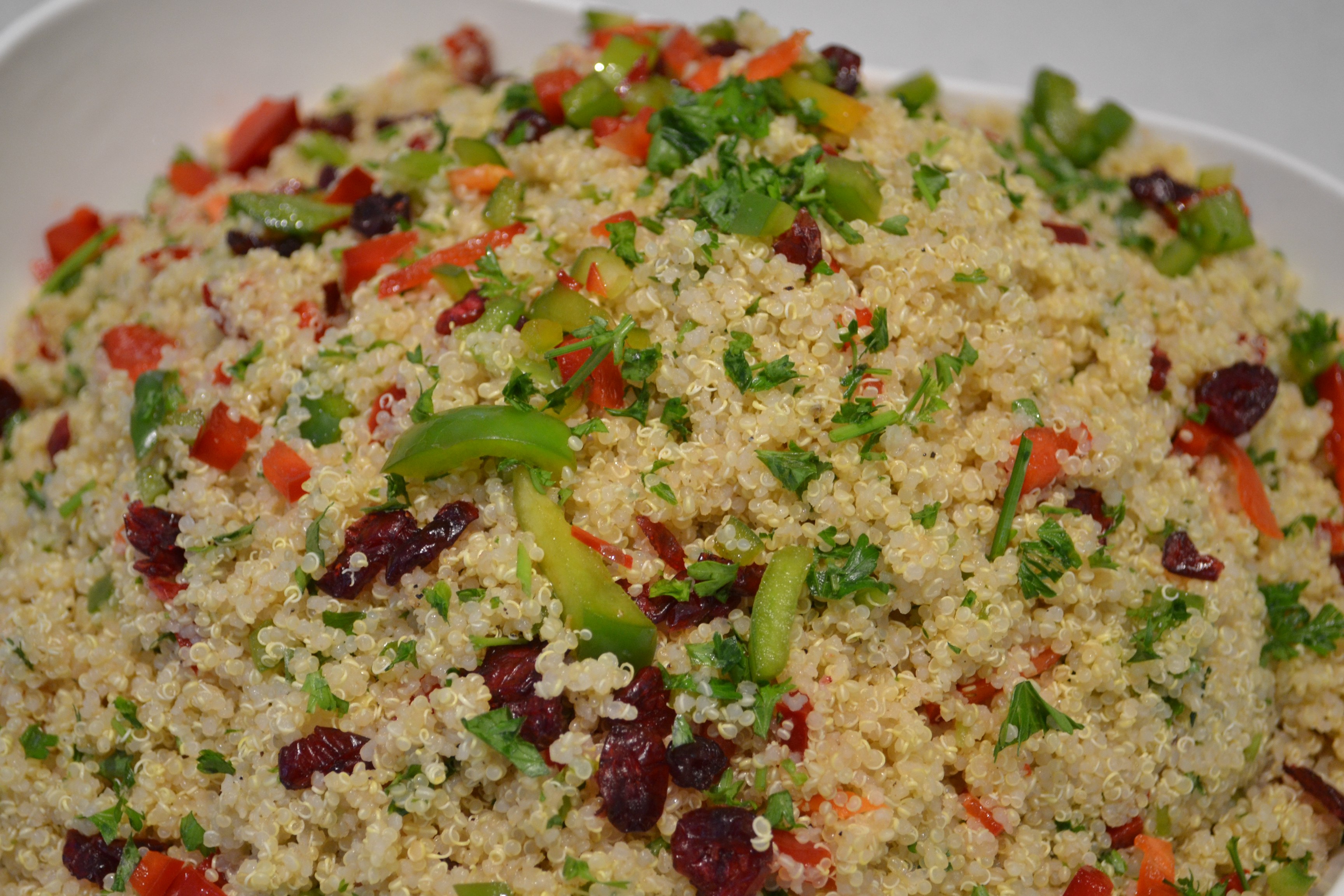Quinoa Cuisine Recipe Book
What Is Quinoa?
Although quinoa often gets classi ed as a grain, like wheat and barley, it’s actually in the
goosefoot family, related to beets, spinach, and chard. The seed of the plant is what’s most
commonly consumed. (The leaves also can be eaten, but they’re not commonly found inU.S. stores.) Nutritionists refer to quinoa as a “pseudograin” (along with amaranth and buckwheat) because it has a similar nutritional pro le to true grains and is prepared and served
in similar ways.
Most of the world’s supply of quinoa is still grown in the Andes region of South America,
although the plant is starting to be cultivated in the United States and Canada, in mountainous areas that have similar cold and dry conditions.
Quinoa plants are bushy stalks that can grow as tall as nine feet, with large seed heads.
There are hundreds of known varieties, but the most commonly available are white, red, and
black. The quinoa seeds are covered in saponin, a bitter coating that agriculturists believe
helps protect the seeds from insects and birds—making quinoa a particularly easy crop to
grow without the use of chemical pesticides. Quinoa processors typically use either a water
bath or mechanical abrasion to remove the saponin.
Quinoa’s Health Benefits
Quinoa has a nutritional pro le that few other plant products can match. You can reap some
of these nutritional bene ts by substituting the seeds for less nourishing foods. Use quinoa
instead of white rice or couscous in pilafs, for example, or incorporate quinoa our or akes
into baked goods in place of all or part of the wheat our.
According to NutritionData.com, one serving of quinoa (185 grams or 6 1/2 ounces)
has the following nutritional content, as compared to the same volume of white rice and
pearled barley:
| COOKED QUINOA (1 CUP/185G) | COOKED WHITE RICE (1 CUP/174G) | COOKED PEARLED BARLEY (1 CUP/182G) | |
| Calories | 222 | 169 | 193 |
| Fat | 4g | 0g | 1g |
| Protein | 8g | 4g | 4g |
| Sodium | 12mg | 9mg | 5mg |
| Carbohydrates | 39g | 37g | 44g |
| Dietary Fiber | 5g | 2g | 6g |
| Sugar | 8g | 0g | 0g |
| Calcium | 31.5mg | 3.5mg | 17.3mg |
| Iron | 12.8mg | 0.2mg | 2.1mg |
| Folate | 77.7mcg | 1.7mcg | 25.2mcg |
| Magnesium | 118mg | 8.7mg | 34.5mg |
| Phosphorous | 281mg | 13.9mg | 84.8mg |
| Potassium | 318mg | 17.4mg | 146mg |
Here are some of the nutritional bene ts you’ll enjoy by making the quinoa recipes in
this book:• Quinoa is rich in protein, calcium, iron, ber, and potassium (which helps
control blood pressure), and it is a good source of B vitamins and vitamin E. It’s
considered a complete protein because it provides a healthy balance of all eight
essential amino acids, one of the few plant foods that does so.• The germ in quinoa seeds makes up about 60 percent of the grain, yielding a high
ratio of protein to carbohydrates. Quinoa is higher in protein than rice, corn, or
wheat, and higher in ber than corn or wheat. This nutritional pro le means that
quinoa can help you feel full longer than many other foods, making it ideal for
trying to maintain a healthy weight.• People with celiac disease and others who are sensitive to gluten, wheat, and other grass-based food products will nd quinoa useful because it is gluten-free.
Quinoa contains more antioxidants than gluten-free products made with rice,
corn, or potato, so incorporating quinoa our into gluten-free baked goods gives
them a big nutritional boost.• Research has also shown that quinoa may be useful in preventing certain diseases.
Because it’s rich in the antioxidant quercetin, it may be helpful in managing
type-2
diabetes and associated hypertension. In one study, quinoa was shown to
reverse certain adverse e ects of a high-fructose diet on lipids and glucose levels in lab animals.
Quinoa Cuisine Recipe Book IS available To Download



Comments
Post a Comment